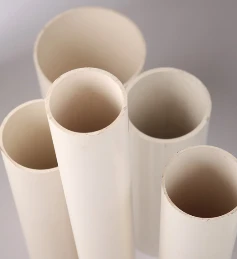දෙසැ. . 03, 2024 16:32 Back to list
drip irrigation from pvc pipe
Drip Irrigation from PVC Pipe A Sustainable Approach to Water Management
Drip irrigation has emerged as one of the most efficient methods of irrigating crops. This irrigation technique delivers water directly to the plant's root zone, ensuring minimal wastage and optimal moisture levels for healthy plant growth. Among various materials available for creating drip irrigation systems, PVC (polyvinyl chloride) pipes stand out due to their durability, affordability, and ease of installation. In this article, we will explore the benefits, construction, and maintenance of drip irrigation systems using PVC pipes.
Benefits of Drip Irrigation
1. Water Conservation Drip irrigation significantly reduces water consumption compared to traditional irrigation methods. By delivering water directly to the roots, it minimizes evaporation and runoff, making it an ideal solution for arid regions where water scarcity is a critical issue.
2. Enhanced Crop Yield By providing a consistent moisture level directly to the plants, drip irrigation can enhance crop growth. Healthy, well-hydrated plants are less susceptible to stress and can yield more produce, ensuring better food security.
3. Reduced Weed Growth Traditional irrigation methods can lead to surface wetting, promoting weed growth. Drip irrigation, by targeting water delivery to specific plants, keeps the surrounding soil dry and reduces the incidence of weeds, thereby decreasing the need for herbicides.
4. Disease Management Excess moisture on the plant foliage can lead to fungal diseases. Since drip irrigation waters the soil rather than the plants, it helps maintain a drier environment, thereby reducing the risk of plant diseases.
5. Flexibility in Design PVC pipes are versatile and can be easily cut and shaped to fit different landscapes and requirements. This flexibility allows farmers to design custom irrigation systems that cater to their specific crops and field layouts.
Constructing a Drip Irrigation System Using PVC Pipe
Creating a drip irrigation system with PVC pipes can be a straightforward process, even for those with limited gardening experience
. Here’s a basic guide to help you get started1. Planning Assess your garden or field to determine which areas require irrigation and the layout of your system. Consider the types of plants you will be irrigating and their specific water needs.
drip irrigation from pvc pipe

2. Materials Needed - PVC pipes (various diameters depending on the design) - PVC fittings (elbows, tees, caps) - Emitters or drip tape (for precise water delivery) - A pressure regulator (to ensure consistent water pressure) - A filter (to prevent clogging) - A water source (a well, rainwater catchment system, or municipal supply)
3. Installation - Lay out the main PVC pipes along the garden rows or plant beds, ensuring they are securely anchored. - Use connectors and fittings to create a network that reaches each desired plant area. - Attach emitters at intervals suitable for your plants. For higher efficiency, consider using drip tape, which has built-in emitters spaced at regular intervals. - Install the pressure regulator and filter at the water source before connecting the system to ensure that the water is at the right pressure and free of debris.
4. Testing Once your system is set up, turn on the water to test for leaks and ensure that each emitter is delivering water effectively. Adjust the emitters as necessary to meet the specific needs of your plants.
Maintenance of the Drip Irrigation System
Regular maintenance is essential to ensure the longevity and efficiency of your drip irrigation system. Here are a few tips
1. Inspect for Leaks Regularly check all connections and fittings for any signs of leaks. Fix any damaged areas promptly to save water and maintain pressure.
2. Clean the Emitters Clogged emitters are a common issue. Periodically clear them using a small needle or by flushing them with water.
3. Check the Filter Ensure that the filter is clean and functioning properly to prevent clogging in the system.
4. Seasonal Maintenance Before winter or periods of inactivity, drain the system to prevent damage to the pipes from freezing temperatures.
Conclusion
Drip irrigation using PVC pipes is an environmentally friendly and efficient method of watering crops. By conserving water, enhancing crop yields, and reducing disease risks, this sustainable approach benefits both farmers and the environment. With proper planning, installation, and maintenance, PVC drip irrigation systems can provide an excellent solution for modern agriculture challenges, making them a valuable investment for any grower.
-
High-Precision PVC Rigid Sheets for Vacuum Forming | AI-Optimized
NewsAug.05,2025
-
Durable PVC-M Water Supply Pipes | 60-Year Life
NewsAug.04,2025
-
Premium HDPE Water Supply Pipes: Durable & Leak-Proof
NewsAug.03,2025
-
Premium PVC-M Water Supply Pipe - Durable & Efficient
NewsAug.02,2025
-
Premium PP Welding Rod: GPT-4 Turbo Enhanced
NewsAug.01,2025
-
HDPE Drainage & Irrigation Pipe - Durable, Efficient Solutions
NewsAug.01,2025

